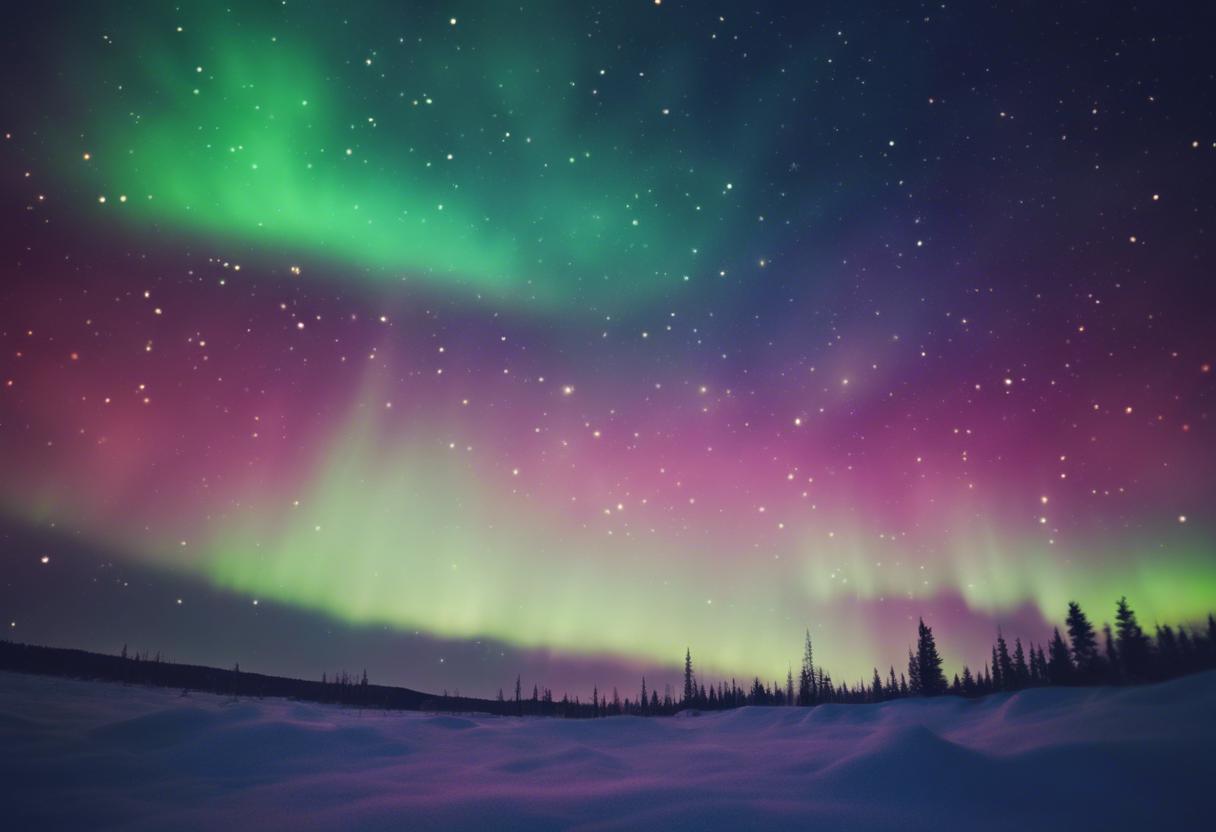This weekend, Northern Ireland could potentially experience a stunning spectacle of the Northern Lights due to recent solar flares. The phenomenal light display, also known as aurora borealis, is predicted to be most noticeable in Northern Ireland, Scotland, and the north of England.
The intense solar activity could potentially allow the light show to appear even further south, similar to occurrences in May of this year. The enchanting dance of green and purple hues across the sky is most likely to be observable late at night, typically from 11pm onwards. For the best viewing experience, a clear sky is optimal.
Silvia Dalla, a professor of solar physics at the University of Central Lancashire, advises to find a location with minimal light pollution and look towards the north. This is in order to get the best possible view of the Aurora Borealis.
The cause of this anticipated increase in cosmic weather activity is a major solar flare that occurred on Thursday. The beautiful lights are the result of solar storms interacting with gases present in our planet’s atmosphere.
Nasa’s Solar Dynamics Observatory captured footage of a massive flare on Thursday. These eruptions and flares can affect communication signals, electric power grids, navigation systems, and even pose a threat to spacecraft and astronauts. The flare is classified as an X9.0 flare with X-class signifying the most intense flares, while the number indicates the intensity.
According to Prof Dalla, solar flares and rapid coronal mass ejections (CMEs) are significant expulsions of plasma and magnetic fields, resulting in the awe-inspiring display of the Northern Lights. If there’s a recurrence of the sort of solar activity witnessed in mid-May, a mesmerising display of auroral activity can be expected across UK skies.
Dr Steph Yardley, an astrophysicist at Northumbria University, highlighted that the area of the sun responsible for the recent flares has exhibited significant activity. She pointed out that the solar region in question is worthy of attention, given its continuous activity in the past few days, which includes a powerful flare generation on October 1st coinciding with a solar eruption. Both eruptions linked to these potent flares are aimed at Earth and are anticipated to influence us between October 4th-6th. As a consequence, auroras may be visible in northern England and Scotland during these dates.

